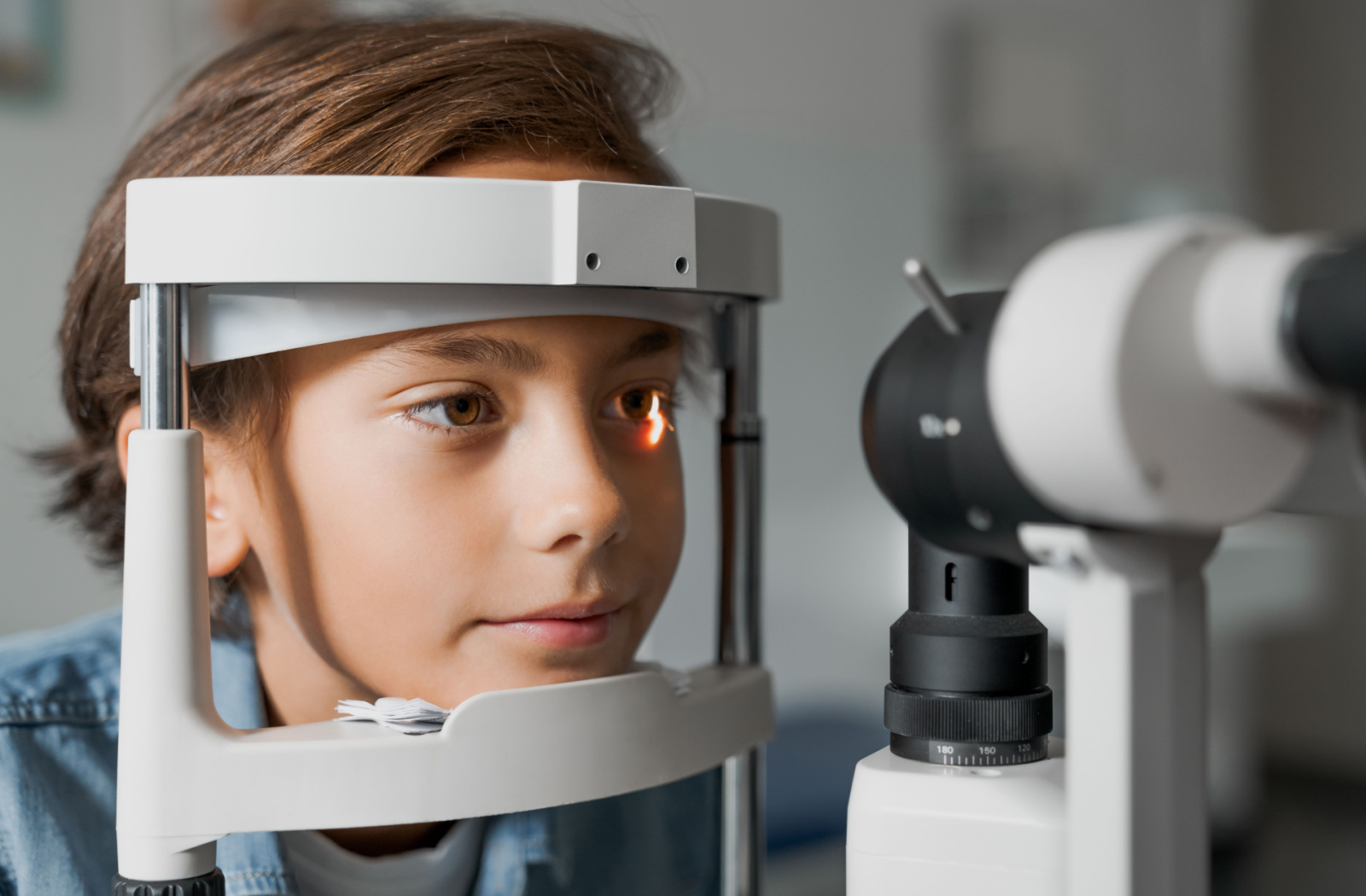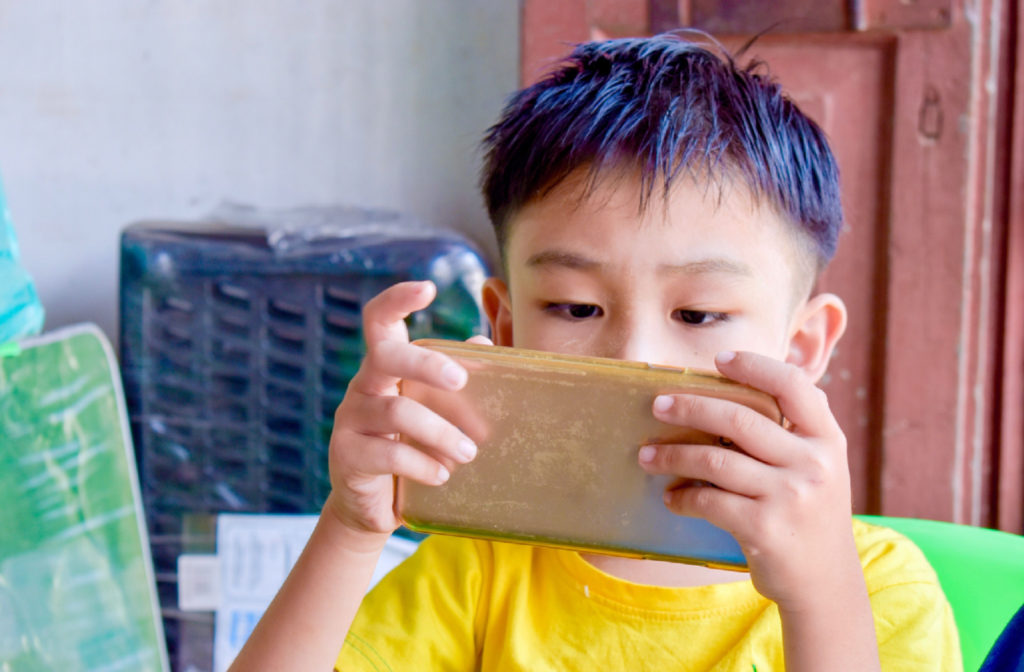Myopia (nearsightedness) is a common condition that can make it harder to see objects clearly at a distance. While there is no way to reverse myopia, there are some ways that your child’s eye doctor can correct it and help stop it from getting worse.
5 myopia treatments for your child include:
- Prescription eyeglasses
- Contact lenses
- Atropine eye drops
- Orthokeratology
- Lifestyle changes
Many of the treatment strategies above can be tailored to your child’s needs and lifestyle. Although eyeglasses and contact lenses are often the first choice for addressing myopia, there are other options that may help too. A comprehensive children’s eye exam can help you and your child find the right treatment with help from your eye doctor.
Myopia Treatments for Kids
There isn’t a single best option for treating your child’s myopia. It ultimately depends on the severity of their nearsightedness, their lifestyle, and their visual needs. Your child’s eye doctor can help you determine which may be the most beneficial myopia treatment route.
Eyeglasses
Glasses are a common and straightforward option for myopia correction. Prescription eyeglasses are created with lenses that adjust your child’s vision based on their myopia level, and they will be designed to provide clear vision at all distances.
When choosing an eyeglass frame for kids, there are a few details to consider. We recommend you look for a pair that’s comfortable, durable, and fits well—but most importantly, has a style your child loves. Including your child in the process of picking their frames can help them get excited about wearing glasses.
Contact Lenses
Contact lenses are another excellent option for myopia correction. They rest directly on the eye and are designed to fit comfortably and provide stable vision. Contacts can be a great alternative for kids who don’t like wearing eyeglasses. Although, appropriate hygiene is essential when using contact lenses. Opting for daily-use lenses could reduce the risk of infection and other complications.
Atropine Eye Drops
Atropine eye drops are a noninvasive myopia treatment option that can slow myopia progression for some kids. The drops contain a low concentration of atropine that works by temporarily relaxing the eye muscles and reducing the strain myopia can put on the eye. This treatment needs to be administered with guidance from an eye doctor.
Orthokeratology
Orthokeratology, also known as ortho-k, involves using specially designed gas-permeable contact lenses worn overnight to reshape the cornea temporarily, providing clear vision throughout the day without the need for glasses or contact lenses.
Ortho-k lenses can help slow myopia progression for kids, and these special contact lenses may also be a good option for an adult who doesn’t want to wear eyewear during the day and isn’t ready for laser eye surgery.
Lifestyle Changes
Some habits can help prevent myopia and promote healthy eye development for kids. Encourage your child to develop healthy habits such as increasing outdoor playtime and reducing their time spent on near-focus activities like reading, writing, and using digital screens.
Stretching and taking frequent breaks whenever there are long periods of near work can also improve comfort and reduce symptoms like eye strain and headaches. Limiting digital screen time and taking frequent breaks also helps prevent several uncomfortable symptoms associated with digital eye strain.
Understanding Myopia
Myopia is a common eye condition in which objects near to you appear clear but those at a distance are blurry. It occurs when light entering your eye doesn’t focus correctly on your retina. Instead, the light is focused in front of it, causing blurry vision.
Myopia is often caused by an eye that is too long or a cornea that is too curved. The condition can develop at any age, but it most often starts in childhood and usually stabilizes by early adulthood.
Causes of Myopia
The exact causes of myopia are not fully understood, but there may be genetic and environmental factors involved. Some people can be born with myopia, while others can develop nearsightedness over time.
Myopia can also be influenced by other factors, such as:
- Reading and writing habits: some studies have shown that children who spend more time reading and writing may be more likely to develop myopia.
- Lack of outdoor exposure: More time spent outdoors may help prevent myopia, and children who spend more time indoors may be at a higher risk of developing myopia.
- Family history: if one or both parents have myopia, their children may be at a higher risk of developing it as well.
Symptoms of Myopia
One of the most common symptoms of myopia is blurred vision when looking at distant objects, but other symptoms may include:
- Eye strain
- Headaches
- Squinting
- Fatigued eyes while driving or doing other things that require focus
Signs of myopia in children can also include:
- trouble seeing the board at school or participating in class
- A short attention span
- Poor school performance
- Frequent eye rubbing
- Sitting too close to screens
If you or your child experience any of these symptoms, it’s important to see an eye doctor for an examination.
What Is Myopia Control?
Myopia cannot be cured or reversed, but it can be slowed and controlled. Myopia control refers to the various methods used by eye doctors to slow the progression of myopia and help stop it from turning into high myopia, which can increase a child’s risk of developing other eye diseases and conditions later in life.

Let’s Discuss the Next Steps for Your Child’s Eye Health
Myopia may be difficult to prevent or stop entirely in many cases, but it’s important that the condition is dealt with early in life to minimize future vision complications for your child. Booking regular comprehensive eye exams is a significant part of the prevention and early treatment of many eye diseases or eye conditions.
Many people should get a comprehensive eye exam every year based on age and overall eye health. The recommended frequency for youth under 18 is every year—to keep up with potentially quick changes in kids’ eye health and vision.
Call our office at Ladera Ranch Optometry to book your family’s next eye exams. One of our experienced optometrists can review your eye health and vision needs to help you and your family see the world around you clearly.



